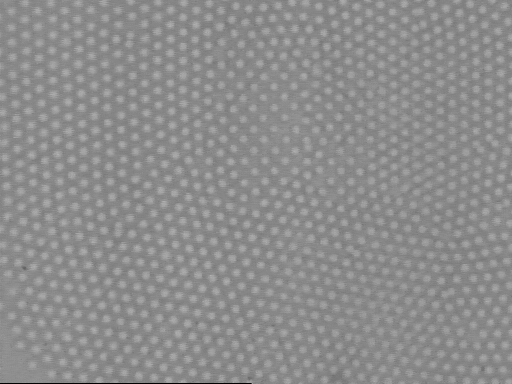
When subjected to an applied external field higher than some critical value, quantum vortices enter a type II superconductor, but spread out due to repulsive vortex-vortex interactions. Others in our lab1 have recently begun to study the behavior of vortex matter in superconductors that have been patterned so as to contain an array of pinning centers. This patterning introduces a static 'landscape' of potential energy, and a competition between vortex-vortex interactions and vortex-pinscape interactions. While this problem has important technological implications, it is also an interesting system for the study of collective behaviors in many-body assemblies. Pam Korda and I have performed an experiment that serves as a classical analog of such interactions.
Holographic optical tweezing was used to create an optical pinscape for colloidal particles. By initiating a convection roll on the far side of their sample cell, we created an external influence that tends to drive the colloid into the pinscape. Here, we discuss this as a novel model system, and explore the similarities and differences between this experiment and the one involving quantum vortices.

1Brad Andrews, Paul Curran, Gabriel C. Spalding, "Magnetic Dot and Anti-Dot Array Fabrication via Nanosphere Physical Masks," John Wesley Powell Research Conference, 2001.
For more information, contact:
(309) 556-3004